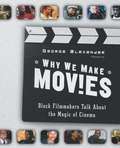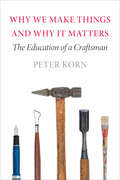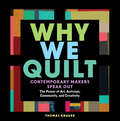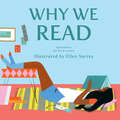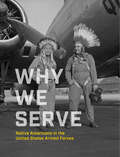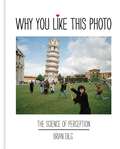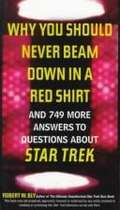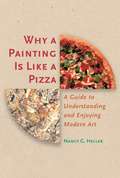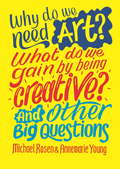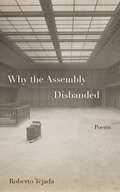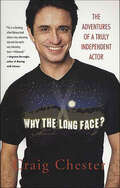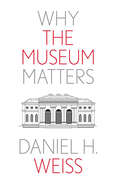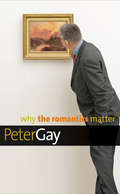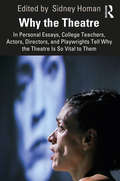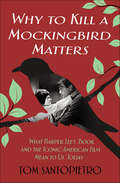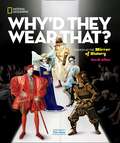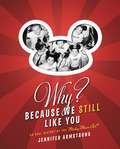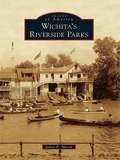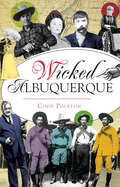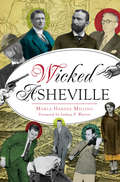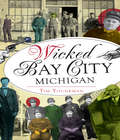- Table View
- List View
Why We Make Movies: Black Filmmakers Talk About the Magic of Cinema
by George AlexanderA sparkling collection of interviews with African American directors and producers. Bringing together more than thirty candid conversations with filmmakers and producers such as Spike Lee, Gordon Parks, Julie Dash, Charles Burnett, and Robert Townsend, Why We Make Movies delivers a cultural celebration with the tips of a film-school master class. With journalist George Alexander, these revolutionary men and women discuss not only how they got their big breaks, but more importantly, they explore the creative process and what making movies means to them. Why We Make Movies also addresses the business of Hollywood and its turning tide, in a nation where African Americans comprise a sizable portion of the film-going public and go to the movies more frequently than whites. In addition, Alexander's cast of directors and producers considers the lead roles they now play in everything from documentaries and films for television to broad-based blockbusters (in fact, the highest-grossing film in Miramax history was Scary Movie, directed by Keenen Ivory Wayans). For film buffs and aspiring filmmakers alike,Why We Make Movies puts a long-overdue spotlight on one of the most exciting and cutting-edge segments of today's silver screen. INTERVIEWS INCLUDE: MELVIN VAN PEEBLES * MICHAEL SCHULTZ * CHARLES BURNETT * SPIKE LEE * ROBERT TOWNSEND * FRED WILLIAMSON * ERNEST DICKERSON * KEENEN IVORY WAYANS * ANTOINE FUQUA * BILL DUKE * FORREST WHITAKER * JULIE DASH * KASI LEMMONS * GINA PRINC-BLYTHEWOOD * JOHN SINGLETON * GEORGE TILLMAN Jr. * REGINALD HUDLIN * WARRINGTON HUDLIN * MALCOLM LEE * EUZHAN PALCY * DOUG McHENRY * DEBRA MARTIN CHASE * St. CLAIR BOURNE * STANLEY NELSON * WILLIAM GREAVES * KATHE SANDLER * CAMILLE BILLOPS * HAILE GERIMA * GORDON PARKS.
Why We Make Things and Why It Matters: The Education of a Craftsman
by Peter KornIn this moving account, Peter Korn explores the nature and rewards of creative practice. We follow his search for meaning as an Ivy-educated child of the middle class who finds employment as a novice carpenter on Nantucket, transitions to self-employment as a designer/maker of fine furniture, takes a turn at teaching and administration at Colorado's Anderson Ranch Arts Center, and finally founds a school in Maine: the Center for Furniture Craftsmanship, an internationally respected, non-profit institution. Furniture making, practiced as a craft in the twenty-first century, is a decidedly marginal occupation. Yet the view from the periphery can be illuminating. For Korn, the challenging work of bringing something new and meaningful into the world through one's own volition – whether in the arts, the kitchen, or the marketplace – is exactly what generates the authenticity, meaning, and fulfillment for which many of us yearn. This is not a "how-to" book in any sense. Korn wants to get at the why of craft in particular, and the satisfactions of creative work in general, to under¬stand their essential nature. How does the making of objects shape our identities? How do the prod¬ucts of creative work inform society? In short, what does the process of making things reveal to us about ourselves? Korn draws on four decades of hands-on experience to answer these questions eloquently, and often poignantly, in this personal, introspective, and revealing book.
Why We March: Signs of Protest and Hope--Voices from the Women's March
by ArtisanNational Bestseller On January 21, 2017, millions of people gathered worldwide for the Women’s March, one of the largest demonstrations in political history. Together they raised their voices in hope, protest, and solidarity. This inspiring collection features 500 of the most eloquent, provocative, uplifting, clever, and creative signs from across the United States and around the world. Each is a powerful reminder of why we march. As with the recent battle cry of “Nevertheless, she persisted,” these messages continue to reverberate daily and fortify a movement that will not be silenced. All royalties from the sale of this book will be donated to Planned Parenthood.
Why We Quilt: Contemporary Makers Speak Out about the Power of Art, Activism, Community, and Creativity
by Thomas KnauerIn this tribute to today’s vibrant quilting community, prize-winning quilter and teacher Thomas Knauer showcases a stunning collection of quilts from a wide range of contemporary makers, accompanied by their testimonials about what inspires and imbues their craft with meaning. From temperance quilts to the AIDS quilt, there’s a rich history of individuals and communities using fabric and thread to connect with others and express themselves, both personally and politically. Why We Quilt blends bits of this history with the stories and work of today’s leading quilters, highlighting themes of tradition, community, consumerism, change, and creativity. With a unique die-cut cover and a richly layered design, this book will enthrall designers, quilters, and all types of handcraft enthusiasts. This publication conforms to the EPUB Accessibility specification at WCAG 2.0 Level AA.
Why We Read: Quotations for Book Lovers
by Ellen SurreyA beautiful keepsake extolling the magic of books.A collection of illustrated quotations—astute, profound, witty, and sweet—on the magic of books. Whether you were devoted to reading as a child or have discovered a new love for books as an adult, Why We Read reminds us what a power and privilege it is to read. Seventy-five quotations from writers and thinkers, such as Jane Austen, Carl Sagan, Margaret Atwood, Roald Dahl, Jorge Luis Borges, and Annie Dillard, celebrate this noble pursuit. Colorful illustrations by Ellen Surrey brightly interpret their words and create a lovely keepsake.
Why We Serve: Native Americans in the United States Armed Forces
by NMAIRare stories from more than 250 years of Native Americans' service in the militaryWhy We Serve commemorates the 2020 opening of the National Native American Veterans Memorial at the Smithsonian National Museum of the American Indian, the first landmark in Washington, DC, to recognize the bravery and sacrifice of Native veterans. American Indians' history of military service dates to colonial times, and today, they serve at one of the highest rates of any ethnic group. Why We Serve explores the range of reasons why, from love of their home to an expression of their warrior traditions. The book brings fascinating history to life with historical photographs, sketches, paintings, and maps. Incredible contributions from important voices in the field offer a complex examination of the history of Native American service. Why We Serve celebrates the unsung legacy of Native military service and what it means to their community and country.
Why You Like This Photo: The science of perception
by Brian DilgWhat you see is very different from what you think you see... There's a lot going on behind the scenes when you like a photograph. Maybe something is tricking your brain into believing a static image is alive with motion. But how? Or maybe you're being drawn in by a rich, high-contrast subject. But what's so great about really black blacks and really white whites? And if the composition is subverting your expectations, where did those expectations come from in the first place?To answer these questions, international award-winning cinematographer Brian Dilg blends photographic fundamentals like exposure, focus, and composition with the latest developments in psychology, cognitive neuroscience, and evolutionary biology, in a thrilling exploration of how a photo works, how your brain perceives it, and why you like the result.
Why You Like This Photo: The science of perception
by Brian DilgCombining science and photography, Brian Dilg explores the reasons behind Why You Like This Photo.
Why You Like This Photo: The science of perception
by Brian DilgCombining science and photography, Brian Dilg explores the reasons behind Why You Like This Photo.
Why You Should Never Beam Down in a Red Shirt and 749 More Answers to Questions About Star Trek
by Robert W. BlyWith new movies, TV shows and books appearing all the time, the popularity of Star Trek is at an all-time high. Now, following his bestselling "The Ultimate Unauthorized Star Trek Quiz Book", Robert W. Bly provides 750 more multiple choice, fill-in-the-blank and mix-and-match questions covering the entire spectrum of Star Trek lore. Including information on the new series, Star Trek: Voyager, and film, Star Trek: Generations. Why You Should Never Beam Down in a Red Shirt also provides complete coverage of the final season of The Next Generation, more from the current season of Deep Space Nine and questions and answers from a variety of new sources-- including several recently published autobiographies by stars of the original series. In addition, the book contains a host of new features-- a listing of companies selling Star Trek collectibles, an appendix listing Star Trek fan publications, a Star Trek bibliography and more. "Why You Should Never Beam Down in a Red Shirt" is one book no Star Trek fan should be without.
Why a Painting Is Like a Pizza: A Guide to Understanding and Enjoying Modern Art
by Nancy G. HellerThe first time she made a pizza from scratch, art historian Nancy Heller made the observation that led her to write this entertaining guide to contemporary art. Comparing modern art not only to pizzas but also to traditional and children's art, Heller shows us how we can refine analytical tools we already possess to understand and enjoy even the most unfamiliar paintings and sculptures. How is a painting like a pizza? Both depend on visual balance for much of their overall appeal and, though both can be judged by a set of established standards, pizzas and paintings must ultimately be evaluated in terms of individual taste. By using such commonsense examples and making unexpected connections, this book helps even the most skeptical viewers feel comfortable around contemporary art and see aspects of it they would otherwise miss. Heller discusses how nontraditional works of art are made--and thus how to talk about their composition and formal elements. She also considers why such art is made and what it "means." At the same time, Heller reassures those of us who have felt uncomfortable around avant-garde art that we don't have to like all--or even any--of it. Yet, if we can relax, we can use the aesthetic awareness developed in everyday life to analyze almost any painting, sculpture, or installation. Heller also gives concise answers to the eight questions she is most frequently asked about contemporary art--from how to tell when an abstract painting is right side up to which works of art belong in a museum. This book is for anyone who agrees with art critic Clement Greenberg that "All profoundly original art looks ugly at first." It's also for anyone who disagrees. It is for anyone who wants to get more out of a museum or gallery visit and would like to be able to say something more than just "yes" or "no" when asked if they like an artist's work.
Why do we need art? What do we gain by being creative? And other big questions (And Other Big Questions)
by Michael Rosen Annemarie YoungA highly topical look at the role of art and the importance of creativity in our lives and the wider world. Art, in its widest sense, encompasses many different forms, from painting and poetry to dance, pottery and quilting and much else besides. Creativity is an essential part of what makes us human as well as being crucial for a range of disciplines in the world of work, including science, architecture and technological innovation. This book asks many questions relating to the importance of art in our lives, such as where is art and where does the impulse to make art come from? Who are artists? What is art for? Can art change anything? What use is the imagination and what is the point of daydreaming? It includes pieces from a range of contributors, including Kate Clanchy, Lemn Sissay, Preti Taneja and Andria Zafirakou, who write about their relationship with art and describe what being creative means to them and to others.Aimed at young people aged 10 and upwards.Part of the groundbreaking and important 'And Other Big Questions' series, which offers balanced and considered views on the big issues we face in the world we live in today.Other titles in the series include:Who are Refugees and Migrants? What makes people leave their homes?What is Right and Wrong? Who decides? Where do values come from?What is Race? Who are racists? Why does skin colour matter?What is Mental Health? Where does it come from?What is Politics? Why should we care?
Why the Assembly Disbanded
by Roberto TejadaPushing the boundaries of Latinx literature and what constitutes a borderlands poetics.Throughout Roberto Tejada’s body of work, the renowned poet and celebrated critic has explored themes of Latinx culture, politics, history, language, and ecologies. In his latest collection, Why the Assembly Disbanded, he presents a unique contribution to Latinx letters that reflects on the relations between the United States and Latin America, especially their real and symbolic borderlands.Immersive, postmodern, and philosophical, Why the Assembly Disbanded provides an associative, critical Latinx aesthetic connecting the Mexico–United States borderlands to Latin America’s neo-baroque heritage. Migrants, settlers, tourists, and exiles moving across various hemispheric landscapes are featured in these exuberant, capacious, and self-reflexive poems. Tejada relates the ravages of white supremacy in our culture that, together with immigrant precarity, turn home into a place of foreboding and impending eviction, even as a dream-weather makes room at last for scenes of possibility and attainment in the account of human history. The sweeping futuristic vistas open on to narratives of colonial extraction, human displacement, abuses of capitalism, mass media spectacle, the antagonism of language and technical images in the sensorium of urban and digital life-worlds, and the relations of desire encouraged by pictures and words in the economy of attention. Los Angeles and Mexico City figure prominently in poems committed to voicing modes of formation and community in an intersectional reckoning of personhoods prompted in work by artists Betye Saar, Amiri Baraka, Connie Samaras, and Rubén Ortiz Torres.With language given to pageantry, tonal precision, and a hopeful lyric radiance that can accommodate ecstasy and justice, Roberto Tejada’s carnivalesque, borderland imagery pushes the boundaries of Latinx literature. World-building by way of reverie, speculation, and retro-futurist tableaux, and with vivid, sometimes violent particularity, his poems enact hallucinatory realities of the hemisphere: an imagination that triangulates history, lyricism, and art as social practice.
Why the Long Face?: The Adventures of a Truly Independent Actor
by Craig ChesterCraig Chester's witty and wry observations on his life and those who have occupied it come together to create this funny, sentimental, yet irreverent collection of essays. From the backroads of Texas to the boardrooms of Hollywood, Craig Chester is unabashedly honest about the pain and the unique rewards of remaining an outsider in an insider's world.While his family prepares to watch the apocalypse from their rooftop with a bucket of KFC, Craig is trying to climb the social ladder at school by saving his neighbors from their sinful ways and speaking in tongues (with not-so-successful results). Along the way Craig experiences gender confusion at grade-school summer camp and has massive reconstructive surgery to correct his deformed teenage face, only to emerge and realize that Hollywood success isn't always measured in externals, but also in the machinations of the heart and how much you don't show. All along he expertly captures the feeling of what it's like to not always fit in—and have that be okay—with a comic timing that's tuned in to the heart and soul of trying to get by day to day.His tales of life, from growing up in the Bible Belt to starring in nine films, prove that the average American life is anything but normal.
Why the Museum Matters (Why X Matters Series)
by Daniel H. WeissA powerful reflection on the universal art museum, considering the values critical to its history and anticipating its evolving place in our cultural future Art museums have played a vital role in our culture, drawing on Enlightenment ideals in shaping ideas, advancing learning, fostering community, and providing spaces of beauty and permanence. In this thoughtful and often personal volume, Daniel H. Weiss contemplates the idea of the universal art museum alongside broad considerations about the role of art in society and what defines a cultural experience. The future of art museums is far from secure, and Weiss reflects on many of the difficulties these institutions face, from their financial health to their collecting practices to the audiences they engage to ensuring freedom of expression on the part of artists and curators. In grappling with these challenges, Weiss sees a solution in shared governance. His tone is one of optimism as he looks to a future where the museum will serve a greater public while continuing to be a steward of culture and a place of discovery, discourse, inspiration, and pleasure. This poignant questioning and affirmation of the museum explores our enduring values while embracing the need for change in a rapidly evolving world.
Why the Romantics Matter
by Peter GayWith his usual wit and élan, esteemed historian Peter Gay enters the contentious, long-standing debates over the romantic period. Here, in this concise and inviting volume, he reformulates the definition of romanticism and provides a fresh account of the immense achievements of romantic writers and artists in all media. Gay's scope is wide, his insights sharp. He takes on the recurring questions about how to interpret romantic figures and their works. Who qualifies to be a romantic? What ties together romantic figures who practice in different countries, employ different media, even live in different centuries? How is modernism indebted to romanticism, if at all? Guiding readers through the history of the romantic movement across Britain, France, Germany, and Switzerland, Gay argues that the best way to conceptualize romanticism is to accept its complicated nature and acknowledge that there is no "single basket" to contain it. Gay conceives of romantics in "families," whose individual members share fundamental values but retain unique qualities. He concludes by demonstrating that romanticism extends well into the twentieth century, where its deep and lasting impact may be measured in the work of writers such as T. S. Eliot and Virginia Woolf.
Why the Theatre: In Personal Essays, College Teachers, Actors, Directors, and Playwrights Tell Why the Theatre Is So Vital to Them
by Sidney HomanWhy the Theatre is a collection of 26 personal essays by college teachers, actors, directors, and playwrights about the magnetic pull of the theatre and its changing place in society. The book is divided into four parts, examining the creative role of the audience, the life of the actor, director, and playwright in performance, ways the theatre moves beyond the playhouse and into the real world, and theories and thoughts on what the theatre can do when given form onstage. Based on concrete, highly personal examples, experiences, and memories, this collection offers unique perspectives on the meaning of the theatre and the beauty of weaving the world of the play into the fabric of our lives. Covering a range of practices and plays, from the Greeks to Japanese Butoh theatre, from Shakespeare to modern experiments, this book is written by and for the theatre instructor and theatre appreciation student.
Why to Kill a Mockingbird Matters: What Harper Lee's Book and the Iconic American Film Mean to Us Today
by Tom SantopietroTom Santopietro, an author well-known for his writing about American popular culture, delves into the heart of the beloved classic and shows readers why To Kill a Mockingbird matters more today than ever before.With 40 million copies sold, To Kill a Mockingbird’s poignant but clear eyed examination of human nature has cemented its status as a global classic. Tom Santopietro's new book, Why To Kill a Mockingbird Matters, takes a 360 degree look at the Mockingbird phenomenon both on page and screen.Santopietro traces the writing of To Kill a Mockingbird, the impact of the Pulitzer Prize, and investigates the claims that Lee’s book is actually racist. Here for the first time is the full behind the scenes story regarding the creation of the 1962 film, one which entered the American consciousness in a way that few other films ever have. From the earliest casting sessions to the Oscars and the 50th Anniversary screening at the White House, Santopietro examines exactly what makes the movie and Gregory Peck’s unforgettable performance as Atticus Finch so captivating.As Americans yearn for an end to divisiveness, there is no better time to look at the significance of Harper Lee's book, the film, and all that came after.
Why'd They Wear That?: From Hair Shirts To Hoop Skirts, Platform Shoes To Tattoos, A Fashion History Of Of The World
by Sarah Albee National Geographic Kids Staff Timothy E. GunnMove over Project Runway. Get ready to chuckle your way through centuries of fashion dos and don'ts! In this humorous and approachable narrative, kids will learn about outrageous, politically-perilous, funky, disgusting, regrettable, and life-threatening creations people have worn throughout the course of human history, all the way up to the present day. From spats and togas to hoop skirts and hair shirts, why people wore what they did is an illuminating way to look at the social, economic, political, and moral climates throughout history.
Why? Because We Still Like You: An Oral History of the Mickey Mouse Club(R)
by Jennifer ArmstrongThis book will tell the behind-the-scenes story of how The Mickey Mouse Club paved the way for all that came after, from its humble beginnings as a marketing ploy, through its short but mesmerizing run, to the numerous resurrections that made it one of television's first true cult hits--all through the recollections of those regular kids-turned-stars who made it a phenomenon. It will reveal, for the first time ever, the untold stories of Annette, Darlene, Cubby and Karen, Bobbie and the rest of the beloved cast. It will explore, through the reminiscences of former fans who grew up to be some of television's finest minds, what made the show so special. And it will examine why the formula the creators of the show invented is more relevant than ever, and whether we'll ever see yet another Club for a new generation.
Wichita Falls
by Kenneth E. Hendrickson Jr.North Texas was the traditional home of several tribes of Plains Indians, notably the Kiowa and Comanche. The first white settlers arrived in 1879, Wichita County was organized in 1882, and the railroad arrived the same year. Agriculture dominated the economy until early in the 20th century when oil was discovered in the area. This discovery led to an oil boom that peaked during World War I. For the next several years, Wichita Falls flourished as a refinery town while continuing to support the agricultural economy that was based largely on cattle and wheat. During World War II, Sheppard Air Force Base was established in Wichita Falls and is still an important contributor to the economy. The refineries have long since disappeared, but oil production and farming remain. Also important is Midwestern State University with a student body numbering approximately 6,000.
Wichita's Riverside Parks
by James E. MasonWichita was founded in 1870 at the junction of the Little and Big Arkansas Rivers in south central Kansas. From the very beginning, the rivers have been a focus for social and recreational activity. Parks, both public and private, were established along these waterways near downtown to capitalize on this natural asset and have gone through many changes. Some of these parks are now over 100 years old, but one no longer exists, having literally been dug up and hauled away in wheelbarrows in 1933. This book chronicles many of the colorful activities and events that have occurred in these parks over the years, and shows how vital they are in the Wichita of today.
Wicked Albuquerque (Wicked)
by Cody PolstonAlbuquerque�s early lawless reputation rivaled that of Dodge City and Tombstone. Its red-light district was known as Hell�s Half Acre. Brothel owner Lizzy McGrath once had a local church demolished to build her new bordello. Milt Yarberry, the town�s first marshal, was hanged for murder. And the controversial Elfego Baca, who had the gall to face Pancho Villa, survived a thirty-six-hour gunfight unscathed. Author Cody Polston presents the tales of those who slipped through the cracks of morality.
Wicked Asheville (Wicked)
by Joshua P. Warren Marla Hardee MillingAsheville is a wonderfully strange city, but it has a few shadows in its past. Teenager Helen Clevenger was brutally murdered at the luxurious Battery Park Hotel in 1936. William Dudley Pelley called himself "America's Hitler" and founded his Silver Legion in Asheville. He stirred up enough antiwar propaganda to go to prison. A desperado named Will Harris came into town on a cold night in November 1906 and left a trail of dead bodies and panic among Asheville citizens. Mayor Gallatin Roberts killed himself in the wake of collapsing banks. Asheville native Marla Hardee Milling delves into wicked stories of murder, sedition, corruption, arson and disease.
Wicked Bay City, Michigan (Wicked)
by Tim YounkmanFrom unscrupulous lumber barons to Hell's Half Mile, Bay City history casts a sinister shadow. Pope Leo XIII was forced to intervene when rioting Catholic immigrants seized St. Stanislaus Catholic Church and battled one another in the city's streets. The police discovered prostitute Lou Hall nearly beaten to death in the Block of Blazes. And respected publishing mogul Edwin T. Bennett's secret life led to the death of a young woman in a Bay City hotel room. Join author Tim Younkman for a wild ride into the city's wicked side.
